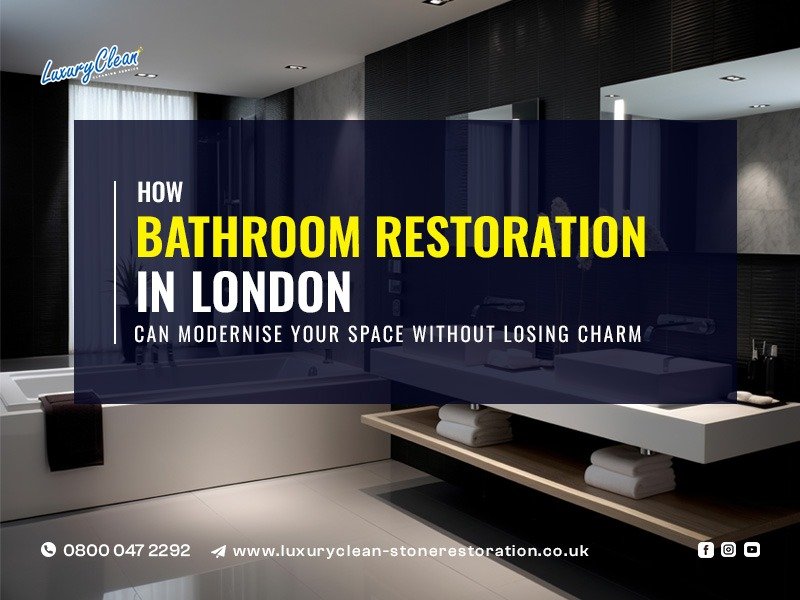London’s blend of historic architecture and modern living creates unique challenges for homeowners. Imagine updating a Victorian-era bathroom without stripping its character—stone restoration in London offers a solution. Damp winters and strict conservation rules mean renovations must balance aesthetics and practicality. Let’s explore how to refresh your space while preserving its soul.
Why London Bathrooms Need a Thoughtful Approach
London’s damp climate can wreak havoc on tiles and grout, while older homes often feature delicate mosaics or marble repair needs. “Many clients want sleek walk-in showers but worry about losing original Edwardian tiling,” says Sarah Collins, a local restoration expert. Add in planning permissions for listed buildings, and it’s clear why cookie-cutter remodels fail here.
- Climate Considerations: London’s humidity demands moisture-resistant materials like quartz or treated limestone.
- Regulatory Nuances: Consult the Local Authority Building Control (LABC) before altering period features.
- Cultural Pride: A 2022 Historic England survey found 72% of London homeowners prioritise preserving original features over trendy upgrades in conservation areas.
Blending Modern Fixtures with Historic Bones
Updating a bathroom restoration project in London isn’t about tearing out the old—it’s strategic layering. Think underfloor heating beneath reclaimed floorboards or smart mirrors with built-in LED lighting. “We once framed a 1920s clawfoot tub with minimalist glass partitions,” shares Collins. “It kept the vintage vibe while adding modern function.”
- Tech Meets Tradition: Install heated towel rails near original fireplaces for a cosy, functional twist.
- Material Mashups: Pair sleek matte-black taps with restored ceramic basins for contrast.
- Space-Saving Hacks: Use recessed shelving in thick Victorian walls to avoid clutter.
The Secret Sauce: Stone Restoration in London
Stone restoration London pros revive tired surfaces without erasing their history. Limestone floors from the 1930s? Sanding and sealing can remove decades of grime. “We use eco-friendly products to comply with Thames Water regulations,” notes Collins. For cracked marble, resin fillers maintain integrity while meeting modern safety standards.
- Eco-Friendly Trends: The UK Green Building Council reports 39% of London renovations now use water-based sealants to align with environmental codes.
- Cost-Saving Tip: Restoring original stone saves £2,500–£4,000 vs. replacement, per the Federation of Master Builders.
- Local Expertise: Seek specialists familiar with Bethnal Green’s terraced house layouts or Kensington’s grand estates.
Marble Repair: A Nod to London’s Luxury Legacy
Marble vanities in Mayfair apartments or Art Deco shower stalls in Hampstead deserve care. “We repaired a 1930s marble countertop in a Pimlico flat by sourcing matching slabs from a Dorset quarry,” Collins recalls. Modern epoxy fillers now make this process faster and more durable.
- Timeless Appeal: Marble’s natural veining adds luxury that synthetic materials can’t mimic.
- Maintenance Musts: Seal annually to prevent staining from hard London tap water.
- Budget-Friendly: Partial resurfacing costs half the price of full replacements.
Lighting: The Unsung Hero of Modernisation
London’s gray winters make lighting crucial. “Dimmable LEDs in a restored Georgian bathroom can mimic candlelight for evening baths,” suggests interior designer Raj Patel. Pair with large skylights (common in converted lofts) to maximise natural light.
- Task Lighting: Install sconces beside mirrors for precise shaving/makeup application.
- Accent Glow: LED strips under floating vanities highlight original floor tiles.
- Smart Controls: Sync lighting with circadian rhythms using apps—ideal for night owls.
Wrapping Up
Updating a London bathroom isn’t just about trends—it’s honouring stories embedded in its walls. Whether you’re restoring a marble repair masterpiece in a Notting Hill townhouse or modernising a post-war Hackney flat, balance is key. Ready to redefine your space? Start by auditing your home’s unique features, then blend the old with the new. After all, London’s magic lies in its layers.

